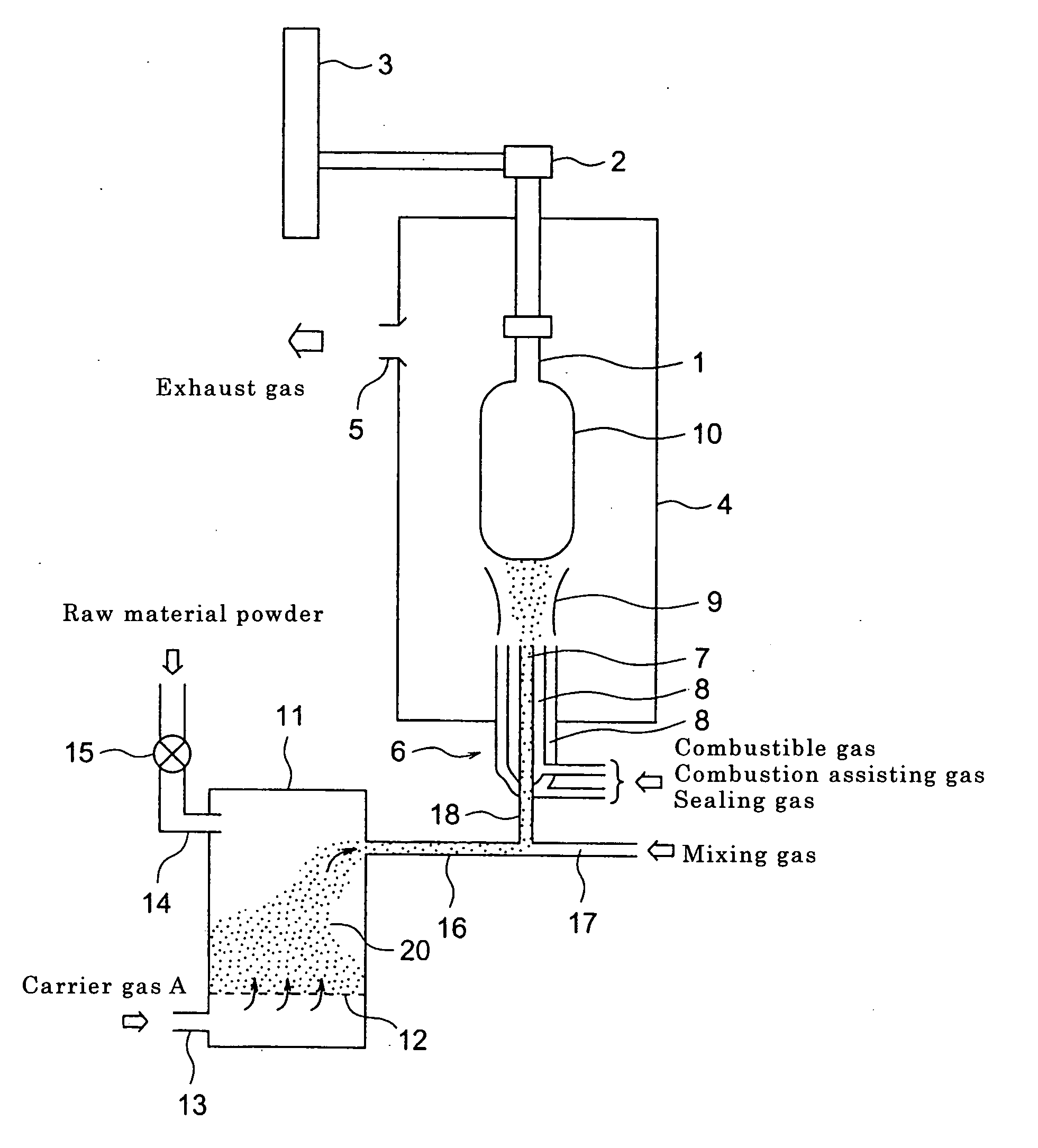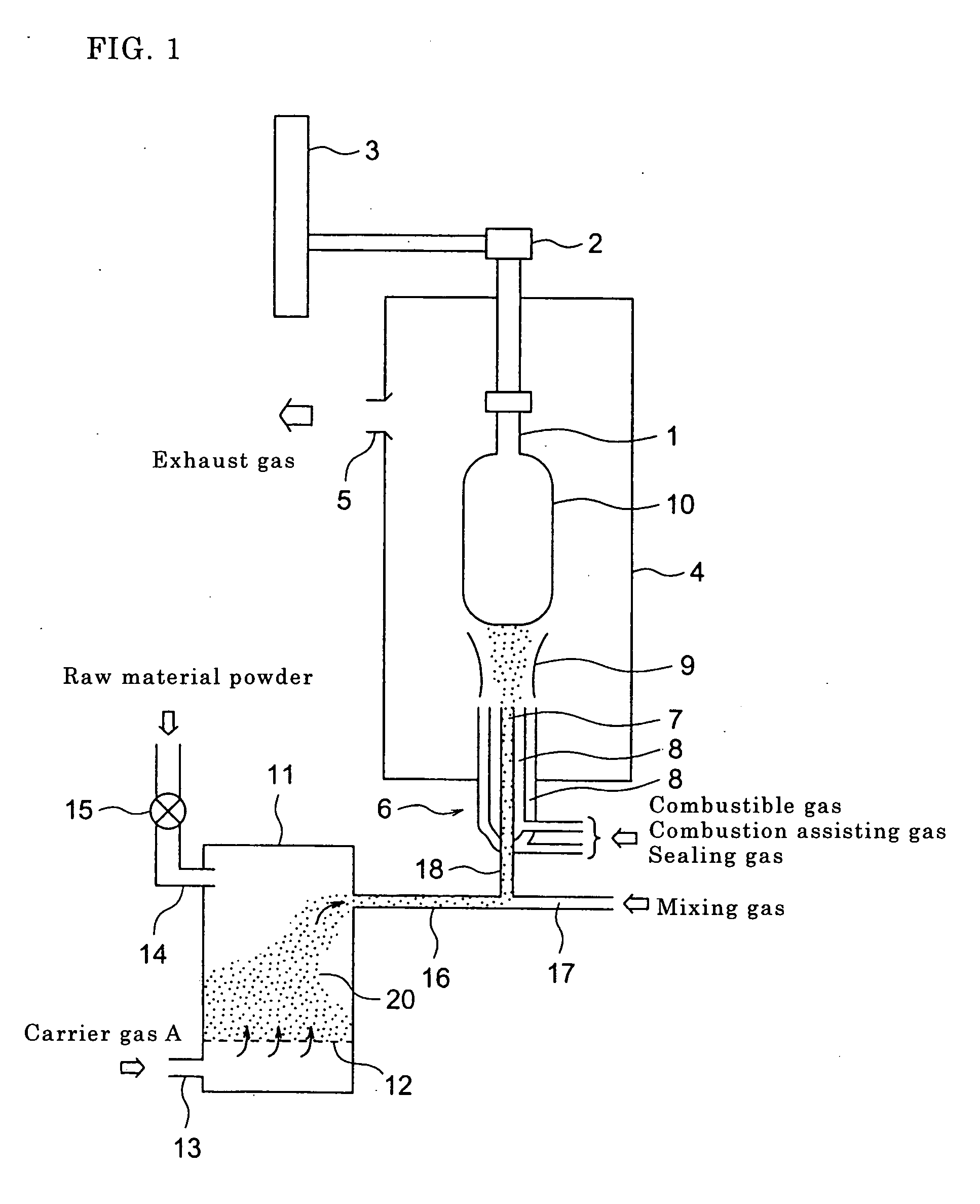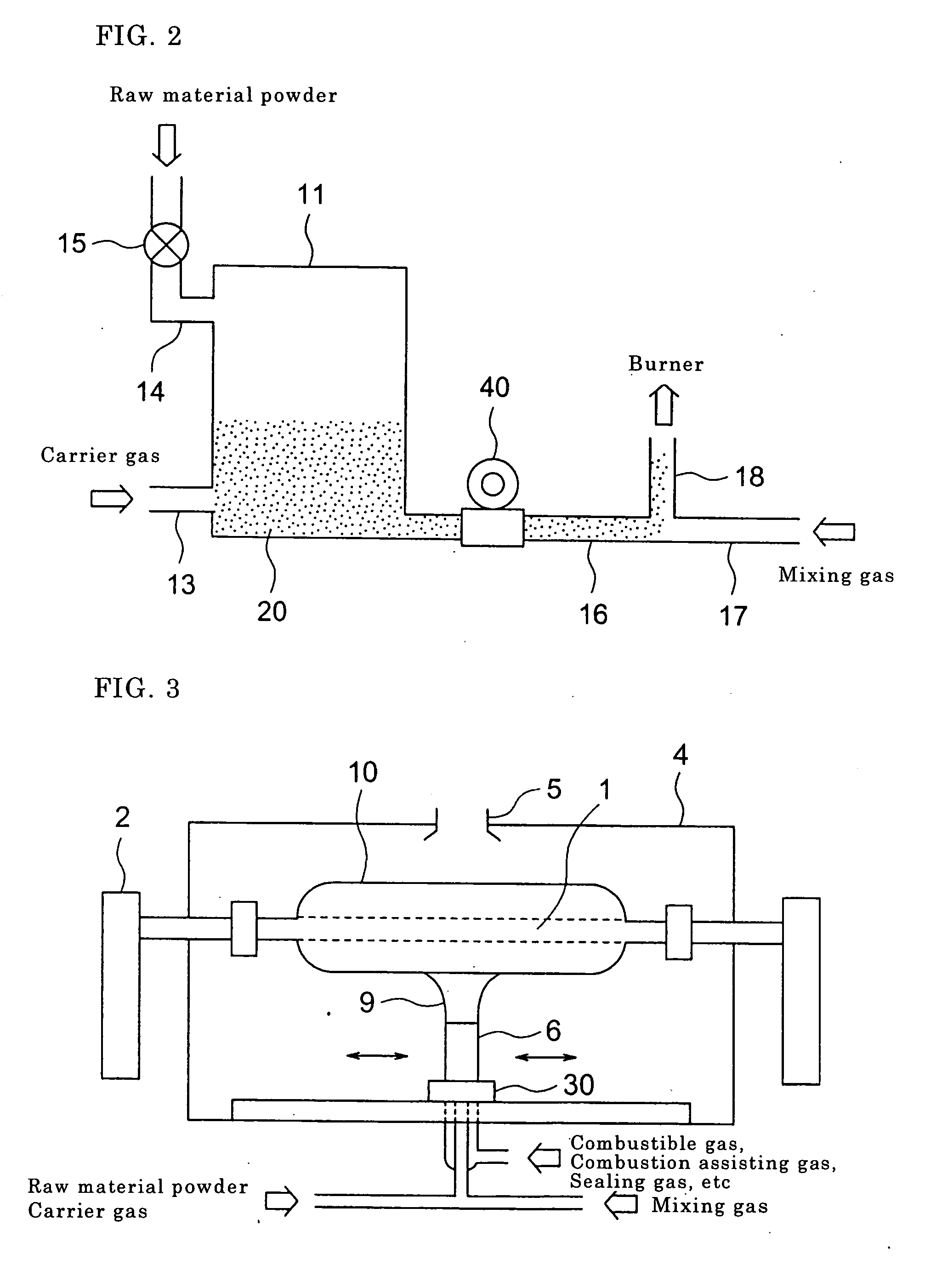Method for producing glass material
- Summary
- Abstract
- Description
- Claims
- Application Information
AI Technical Summary
Benefits of technology
Problems solved by technology
Method used
Image
Examples
example 1
[0063] A SiO2 powder (trade name: AEROSIL™ 380, (produced by DEGUSSA Co., Ltd.)) is used as a raw material. The powder has an average particle diameter of 0.007 μm, and a specific surface area of 380 m2 / g.
[0064] The SiO2 powder is charged in the upper portion of the raw material powder storage container 11 partitioned into the upper and lower spaces with a mesh, and dry air functioning as the carrier gas is introduced at a rate of 0.5 liter / min into the SiO2 powder from the bottom of the container through the mesh. The raw material powder is fluidized by being mixed with the dry air, and transferred, together with the dry air, to the raw material powder supply line 16 from the raw material powder storage container. A mixture of the raw material powder and the dry air that has come through the raw material powder supply line 16 is mixed with an O2 gas supplied through the mixing gas supply line 17, and then ejected into the flame from the central port of the burner. With respect to ...
example 2
[0066] An SiO2 powder (trade name: AEROSIL™ 380, (produced by DEGUSSA Co., Ltd.)) is used as a raw material. He gas is used as the carrier gas at a flow rate of 0.5 liter / min. A mixture of the fluidized raw material powder (10 to 11 g / min) and He gas is mixed with H2 gas supplied at a flow rate of 2 liter / min through the mixing gas supply line 17, and then ejected into the flame from the central port of the burner. Furthermore, a sealing Ar gas is supplied to the second port of the burner at a rate of 3 liter / min, O2 gas is supplied to the third port of the burner at a rate of 10 liter / min, Ar gas is supplied to the fourth port of the burner at a rate of 3 liter / min, and H2 gas is supplied to the fifth port of the burner at a rate of 12 liter / min. Furthermore, other ports are disposed around the periphery of the burner, for supplying H2 and O2, respectively, so that an outer flame is formed by the supplied H2 and O2.
[0067] The glass particulates are deposited on the starting member...
example 3
[0068] An SiO2 powder (trade name: AEROSIL™ 130, (produced by DEGUSSA Co., Ltd.)) is used as a raw material. The powder has an average particle diameter of 0.016 μm, and a specific surface area of 130 m2 / g.
[0069] The raw material powder is fluidized with dry air functioning as the carrier gas at a flow rate of 0.4 liter / min. A mixture of the fluidized raw material powder (10 to 10.5 g / min) and the dry air is mixed with O2 gas supplied at a flow rate of 2 liter / min through the mixing gas supply line 17, and then ejected into the flame from the central port of the burner. Furthermore, a sealing Ar gas is supplied to the second port of the burner at a rate of 3 liter / min, H2 gas is supplied to the third port of the burner at a rate of 30 liter / min, Ar gas is supplied to the fourth port of the burner at a rate of 3 liter / min, and O2 gas is supplied to the fifth port of the burner at a rate of 18 liter / min. Furthermore, other ports are disposed around the periphery of the burner, for su...
PUM
| Property | Measurement | Unit |
|---|---|---|
| Particle diameter | aaaaa | aaaaa |
| Pressure | aaaaa | aaaaa |
| Flow rate | aaaaa | aaaaa |
Abstract
Description
Claims
Application Information
 Login to View More
Login to View More - R&D
- Intellectual Property
- Life Sciences
- Materials
- Tech Scout
- Unparalleled Data Quality
- Higher Quality Content
- 60% Fewer Hallucinations
Browse by: Latest US Patents, China's latest patents, Technical Efficacy Thesaurus, Application Domain, Technology Topic, Popular Technical Reports.
© 2025 PatSnap. All rights reserved.Legal|Privacy policy|Modern Slavery Act Transparency Statement|Sitemap|About US| Contact US: help@patsnap.com



